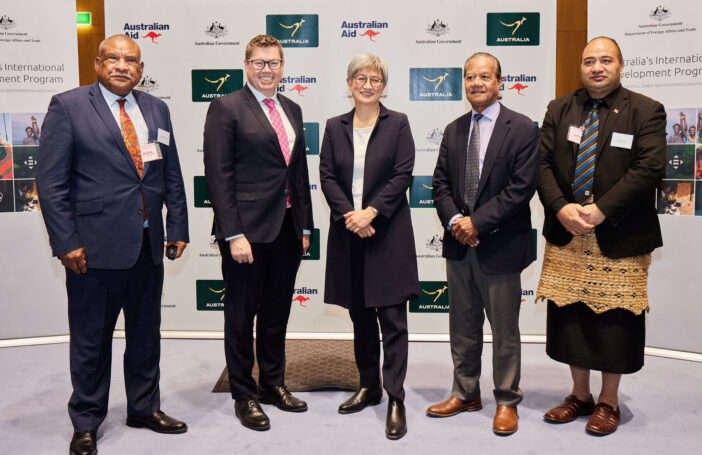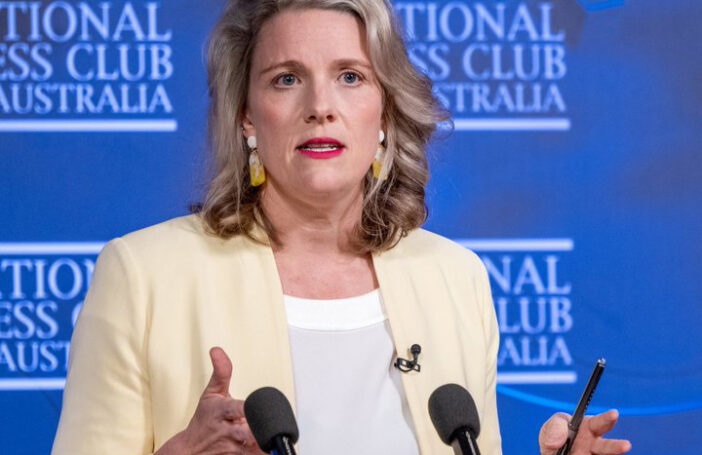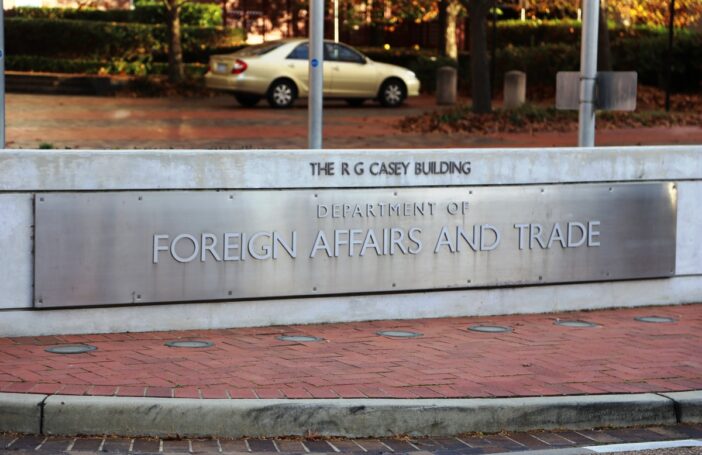The release of the Albanese government’s new international development policy is now being routinely described by analysts and pundits as “imminent”. It is not clear yet what form the launch of this new policy might take. For the last 40 years, with one exception, Australian ministers have launched their aid policies through a major public speech. Two venues have provided the principal platforms for these launches – the Federal Parliament and the National Press Club.
In the mid-1980s, the Hawke government released its response to the first major independent review of Australia’s aid since the creation of the program in the 1960s, the so-called Jackson Review. Speaking in the Parliament in November 1985, Labor’s Foreign Minister Bill Hayden delivered a ministerial statement outlining the government’s response to the report, declaring that the aid program would be explicitly designed to meet three distinct but complementary objectives – strategic, commercial and development/humanitarian:
We are concerned to ensure as far as we can that economic growth and social progress are achieved in developing countries, especially in our region, and that they be achieved in orderly and stable ways. This in turn will ensure that our relations with regional countries, both political and commercial, develop in a harmonious and mutually beneficial way.
Aid is not somehow tainted because, among other things, it helps serve our own economic interests. But there are arguments that go in that direction. The Government, in other words, maintains a balance of motives in our aid program – a necessary and perfectly defensible balance – between our humanitarian concern for our fellow human beings and our economic and political interests.
The Howard government launched two aid policies during its tenure in the 1990s and 2000s. In November 1997, Foreign Minister Alexander Downer delivered a ministerial statement to Parliament in response to another independent assessment, the Simons Review. In contrast to the Jackson report, this review recommended that the aid program adopt a single overarching objective in order to strengthen its coherence, impact and effectiveness: poverty reduction. Launching the government’s policy response, Better aid for a better future, from the dispatch box Foreign Minister Downer said:
The Simons committee confirmed my concern that the aid program had become burdened by a range of competing interests. A clear development objective for the aid program is needed. The aid program cannot and should not be a vehicle for other purposes, such as short-term commercial goals.
The government has determined that the objective of the aid program will be “to advance Australia’s national interest by assisting developing countries to reduce poverty and achieve sustainable development.”
In April 2006, the Howard government launched Australia’s first aid White Paper, Australian aid: promoting growth and stability, at the National Press Club. Delivered in context of Howard’s pledge in 2004 to double the size of the aid program by 2010, Foreign Minister Downer stated:
This Government has always held the view that an effective and well-targeted aid program, focusing on the alleviation of poverty and the promotion of sustainable development, is clearly in the national interest. This view is even more relevant today as the links between regional development and Australia’s national interest become increasingly intertwined.
The aid program’s objective has been slightly reworked to leave no doubt about the Government’s intentions. The objective captures Australia’s strong and unstinting commitment to the global effort to achieve the Millennium Development Goals.
The launch of the Gillard government’s aid policy saw a return to the Parliament. Responding to the Hollway Review, in July 2011 Foreign Minister Kevin Rudd launched An effective aid program for Australia: making a real difference, delivering real results to help guide a more activist Australian role on the world stage, a continued scale-up of the program and an expanded aid bureaucracy:
The Review was commissioned against the backdrop of an expansion of Australia’s aid program in recent years, and the Government’s commitment to further increase the proportion of our Gross National Income spent on aid to 0.5 per cent by 2015-16. Meeting this target would put us equal with the average OECD commitment. I welcome the fact that this commitment is shared by the Opposition. …
I want to see an aid program that is world-leading in its effectiveness, a program that delivers real and measurable results in reducing poverty on the ground, and a program of which all Australians can be proud.
Less than three years later, the Abbott government would launch its new policy in the wake of the dissolution of this bipartisan consensus, massive budget cuts and the unexpected abolition of Australia’s overseas development agency, AusAID. Launching Australian aid: promoting prosperity, reducing poverty, enhancing stability at the Press Club in June 2014, Foreign Minister Julie Bishop promised a “new aid paradigm” focused on effectiveness and innovation, increasing the role of the private sector and enhancing gender equality. With regard to the former, Minister Bishop boldly proclaimed that notwithstanding the Coalition’s abolition of AusAID:
We will strengthen the way we assess the performance of contractors, NGOs and multilateral organisations delivering Australian aid. We will build on what works so that funding will increasingly flow to the best performing organisations.
When projects don’t deliver the results we expect, they will be put on a rigorous path to improvement or be terminated. If a program has failed we will call it for what it is and come up with a better way to meet the challenge.
It was 2020 that saw the break with tradition. Neither Parliament nor the Press Club would provide the venue for the release of the Morrison government’s temporary aid strategy, Partnerships for recovery. The strategy was released in May on the DFAT website with no public fanfare or a major speech from Foreign Minister Marise Payne. This is unsurprising perhaps given the context of the COVID-19 pandemic and its associated restrictions, a context which framed the entire strategy and its objectives. But it also demonstrated the Morrison government’s clear ambivalence towards aid. This was reflected in the fact that it both announced temporary increases in aid spending in response to the pandemic but also, bizarrely, tried to simultaneously maintain the fiction that total aid wasn’t increasing. The Morrison government was also one of the worst performers when it came to aid transparency.
The Albanese government has pledged to improve transparency, as well as declaring that “an effective development program [is] critically important to advancing our national interests”. A return to the bipartisan tradition of a public statement setting out its new aid policy would be fully consistent with these stated positions. The Morrison government’s decision not to launch its policy with a public speech was a retrograde step that should not constitute the new normal. Moreover, if it is so inclined, such a statement would represent a valuable chance for the Albanese government to show that it takes development seriously, and to re-engage with the Australian community to make the case for a bigger and better aid program in a poorer and more fragile world.




